Top Rankings
Summers County Schools School District ranks among the top 20% of public school district in West Virginia for:
Category
Attribute
Student Attention
Lowest student:teacher ratio (Top 1%)
For the 2025 school year, there is 1 public high school serving 669 students in Summers County Schools School District.
Public High Schools in Summers County Schools School District have a diversity score of 0.14, which is less than the West Virginia public high school average of 0.22.
Public High School in Summers County School School District have a Graduation Rate of 77%, which is less than the West Virginia average of 91%.
The school with highest graduation rate is 6-12 Summers County Comprehensive High School, with 75-79% graduation rate. Read more about public school graduation rate statistics in West Virginia or national school graduation rate statistics.
Minority enrollment is 7% of the student body (majority Black), which is less than the West Virginia public high school average of 12% (majority Black).
Overview
This School District
This State (WV)
# Schools
4 Schools
172 Schools
# Students
1,213 Students
80,929 Students
# Teachers
111 Teachers
5,875 Teachers
Student : Teacher Ratio
11:1
11:1
District Rank
Summers County Schools School District, which is ranked within the bottom 50% of all 57 school districts in West Virginia (based off of combined math and reading proficiency testing data) for the 2021-2022 school year.
The school district's graduation rate of 75-79% has decreased from 85-89% over five school years.
Overall District Rank
#54 out of 57 school districts
(Bottom 50%)
(Bottom 50%)
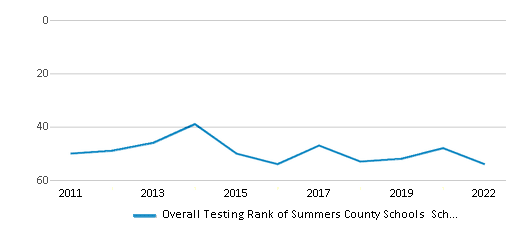
Math Test Scores (% Proficient)
19%
32%
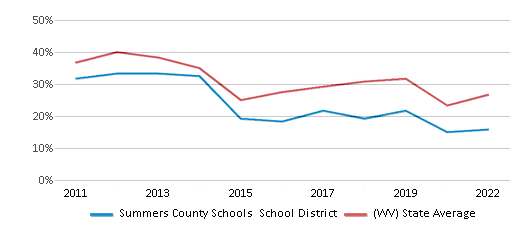
Reading/Language Arts Test Scores (% Proficient)
30%
41%
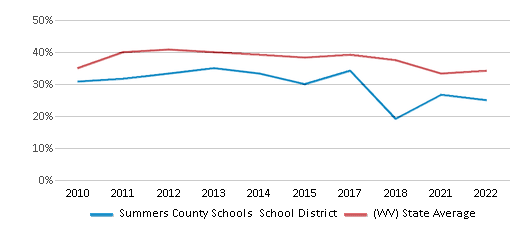
Science Test Scores (% Proficient)
18%
28%
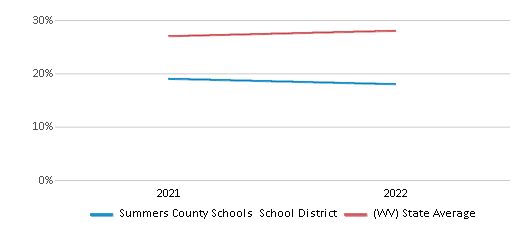
Graduation Rate
75-79%
91%
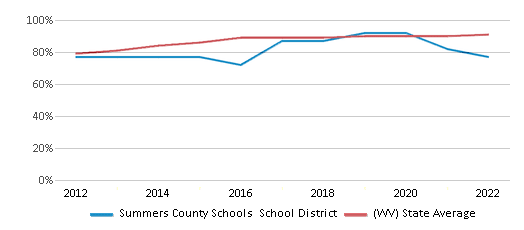
Students by Ethnicity:
Diversity Score
0.13
0.22
# American Indian Students
n/a
93 Students
% American Indian Students
n/a
n/a
# Asian Students
n/a
618 Students
% Asian Students
n/a
1%
# Hispanic Students
16 Students
2,064 Students
% Hispanic Students
1%
3%
# Black Students
20 Students
3,524 Students
% Black Students
2%
4%
# White Students
1,128 Students
71,575 Students
% White Students
93%
88%
# Hawaiian Students
n/a
37 Students
% Hawaiian Students
n/a
n/a
# Two or more races Students
49 Students
3,018 Students
% of Two or more races Students
4%
4%
Students by Grade:
# Students in PK Grade:
57
221
# Students in K Grade:
79
182
# Students in 1st Grade:
84
218
# Students in 2nd Grade:
86
162
# Students in 3rd Grade:
65
153
# Students in 4th Grade:
80
176
# Students in 5th Grade:
93
266
# Students in 6th Grade:
79
839
# Students in 7th Grade:
103
1,634
# Students in 8th Grade:
108
1,682
# Students in 9th Grade:
111
20,756
# Students in 10th Grade:
100
19,734
# Students in 11th Grade:
87
18,284
# Students in 12th Grade:
81
16,622
# Ungraded Students:
-
-
District Revenue and Spending
The revenue/student of $16,500 is higher than the state median of $15,963. The school district revenue/student has grown by 14% over four school years.
The school district's spending/student of $14,673 is less than the state median of $15,138. The school district spending/student has grown by 14% over four school years.
Total Revenue
$20 MM
$3,933 MM
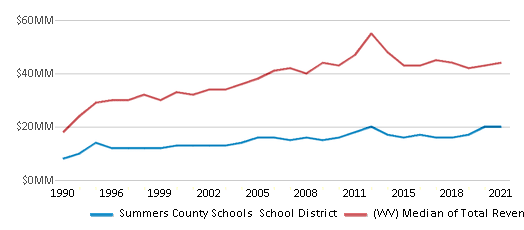
Spending
$18 MM
$3,730 MM
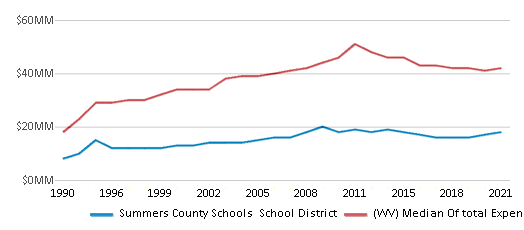
Revenue / Student
$16,500
$15,963
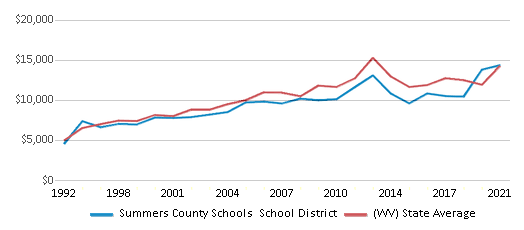
Spending / Student
$14,673
$15,138
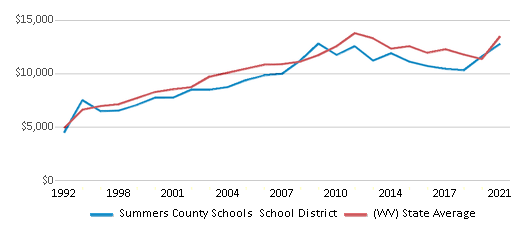
Best Summers County Schools School District Public High Schools (2025)
School
(Math and Reading Proficiency)
(Math and Reading Proficiency)
Location
Grades
Students
Rank: n/an/a
37 Bobcat Dr
Hinton, WV 25951
(304) 466-6040
Hinton, WV 25951
(304) 466-6040
Grades: 6-12
| 669 students
Recent Articles

Year-Round Or Traditional Schedule?
Which is more appropriate for your child? A year-round attendance schedule or traditional schedule? We look at the pros and cons.

Why You Should Encourage Your Child to Join a Sports Team
Participating in team sports has a great many benefits for children, there is no doubt. In this article you will learn what those benefits are.

White Students are Now the Minority in U.S. Public Schools
Increasing birth rates among immigrant families from Asia and Central and South America, combined with lower birth rates among white families, means that for the first time in history, public school students in the United States are majority-minority. This shift in demographics poses difficulties for schools as they work to accommodate children of varying language abilities and socio-economic backgrounds.





